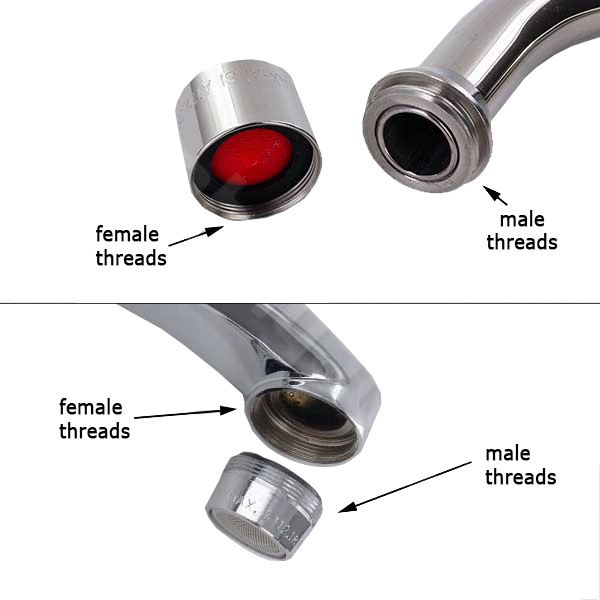DIY Plumbing Repairs
Plumbing issues are a common challenge for homeowners. From minor annoyances like a dripping faucet to major problems like a burst pipe, knowing how to handle these issues can save you a lot of stress and expense. Some plumbing problems can be resolved without calling a plumber. Here are some common DIY plumbing repairs:
Fixing a Leaky Faucet
- Locate the water shutoff valves and turn them off. The main shutoff valve is crucial for controlling water flow into the entire house and is usually near the water meter, whereas fixture-specific valves are located close to the appliance or fixture they serve, like under sinks or behind toilets.
- Remove the handle and take out the cartridge or valve. Use a screwdriver or appropriate tool to remove the handle of the faucet, exposing the cartridge or valve inside. Gently pull out the cartridge or valve using pliers or a specialized tool, taking care not to damage surrounding components.
- Check washers, O-rings, and seals for wear and replace them as needed. Inspect the washers, O-rings, and seals for any signs of wear, cracks, or damage. These components are essential for creating watertight seals, and replacing worn parts can prevent leaks and ensure proper faucet function.
- Put the faucet back together and turn the water supply back on to check for leaks. Carefully reassemble the faucet, ensuring all parts are properly aligned and secured. Turn the water supply back on slowly, and check the faucet for any leaks by running water through it and inspecting the connections.
Clearing a Clogged Drain
- Pour boiling water down the drain to dissolve minor clogs. Boiling water can help dissolve grease, soap scum, and other debris that may be causing a minor clog. Carefully pour a pot of boiling water directly into the drain in stages, allowing it to work through the blockage and clear the pipes.
- Use a plunger to create suction and move the blockage. Place the plunger over the drain opening to create a seal and plunge vigorously up and down to generate suction. This suction can help dislodge and move the blockage through the drain pipes, allowing water to flow freely again.
- For stubborn clogs, a plumber’s snake may be necessary. A plumber’s snake, or drain auger, is a flexible tool that can reach deeper into the pipes to break up or retrieve more stubborn clogs. Insert the snake into the drain, then rotate it to catch or break up the clog, and then pull it out to remove the obstruction.
Repairing a Running Toilet
- Inspect the flapper valve at the bottom of the toilet tank to ensure it forms a tight seal over the flush valve seat, preventing water from leaking into the bowl. If the flapper is warped, cracked, or deteriorated, replace it with a new one to maintain a proper seal and prevent constant running water, which can waste water and increase utility bills.
- Adjust the float in the toilet tank so that it stops the water flow when the water reaches the desired fill level, usually marked on the inside of the tank. A properly set float prevents the tank from overfilling and water from continuously running into the bowl, which can waste water and increase utility bills.
- Inspect the fill tube, which connects the fill valve to the overflow tube, to ensure it is securely attached and directed into the overflow tube without any kinks. Check for any signs of leaks or damage along the tube, as a leaking fill tube can cause water wastage and improper tank filling.
Improving Water Pressure
- The aerator is a small screen attached to the tip of the faucet. It can become clogged with sediment and mineral deposits over time. Unscrew the aerator, rinse it under running water, and use a brush or toothpick to remove any debris. Then reattach it to restore proper water flow.
- Check all exposed pipes under sinks, around the water heater, and in basements or crawl spaces for any signs of leaks, such as water stains, puddles, or dampness. Even small leaks can reduce water pressure and lead to higher water bills, so it’s important to address them promptly.
- Corroded pipes can reduce water flow, leaks, and potential pipe bursts, posing a risk to your home’s plumbing system. If you notice corrosion, rust, or discoloration on your pipes, consult a professional plumber who will assess the situation.
When to Call a Professional
Homeowners can handle many plumbing issues, but some situations require professional expertise. Contact a licensed plumber for:
- Major Leaks: Large leaks or pipe bursts can cause significant water damage and require immediate attention.
- Sewer Line Issues: Problems like sewer backups or persistent foul odors need expert handling.
- Water Heater Problems: Professionals should service the complex systems involved in water heaters.
- Home Renovations: Licensed plumbers should always handle major renovations involving plumbing to ensure compliance with building codes.
Preventative Maintenance Tips
Preventative maintenance can help you avoid many common plumbing problems. Here are some tips:
- Regular Inspections: Periodically check for leaks under sinks and around appliances.
- Avoid Chemical Drain Cleaners: These can damage pipes over time, so use natural or mechanical methods to clear clogs.
- Insulate Pipes: In cold climates, insulate pipes to prevent them from freezing and bursting.
- Know Your Main Shutoff Valve: Knowing the location of your main shutoff valve can save time in an emergency.
Conclusion
Handling plumbing repairs can seem daunting, but with the right knowledge, you can easily manage many common issues. Regular care and timely repairs are essential to maintaining the functionality and safety of your plumbing system.

